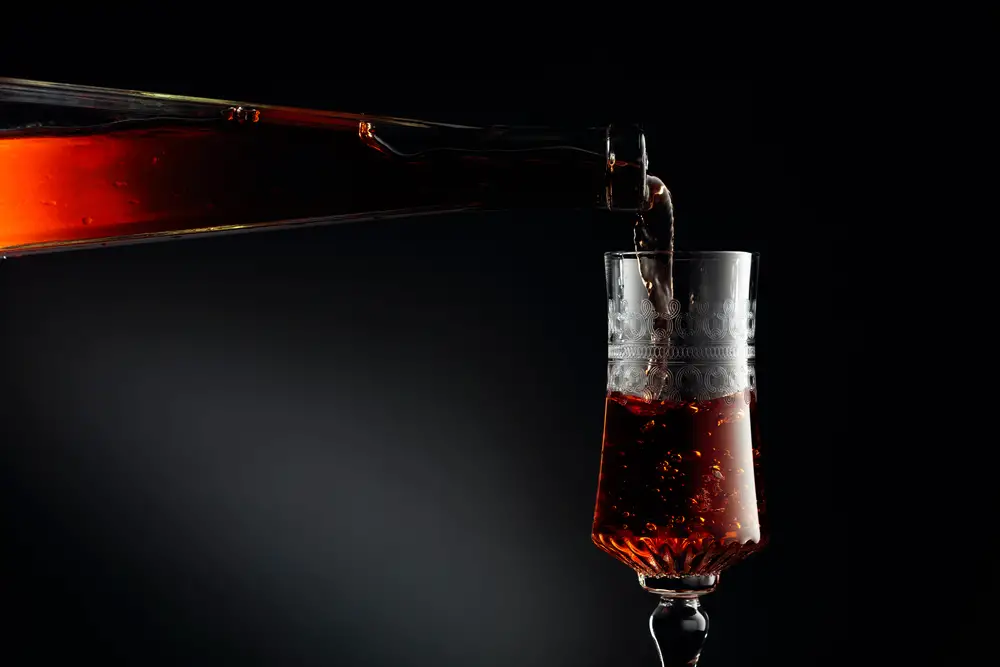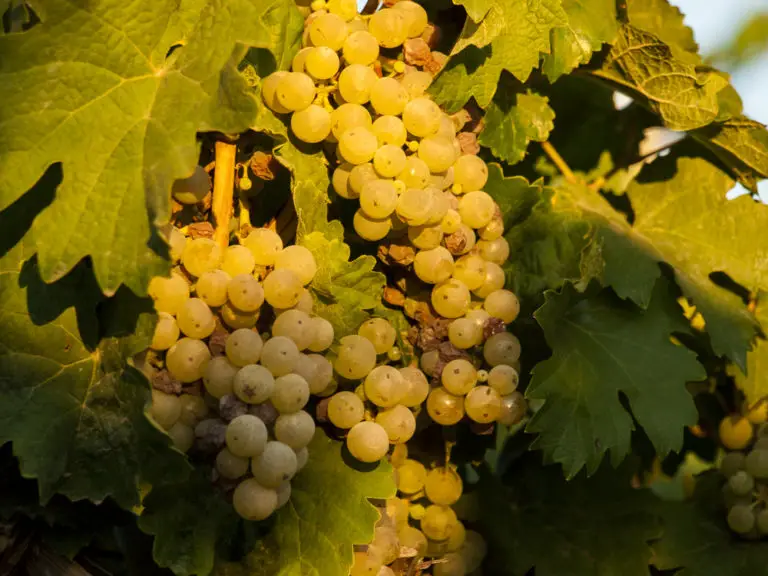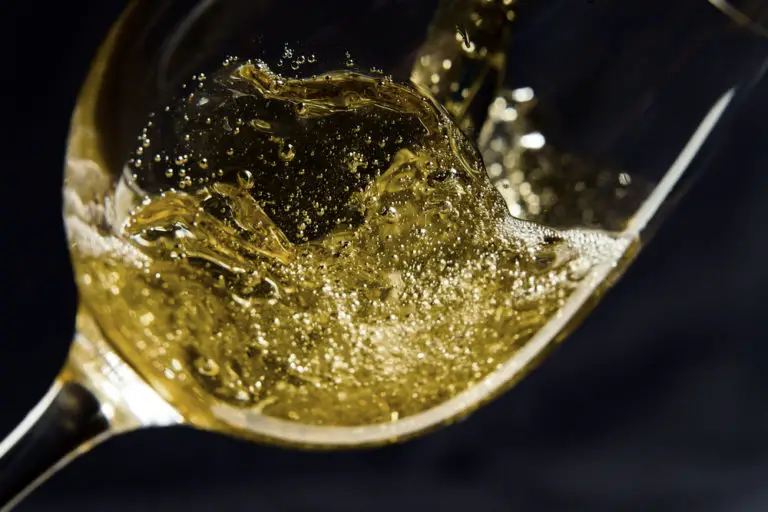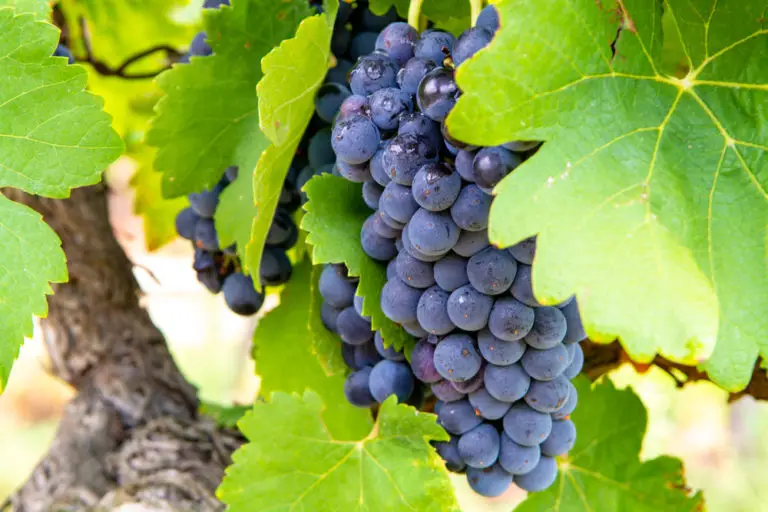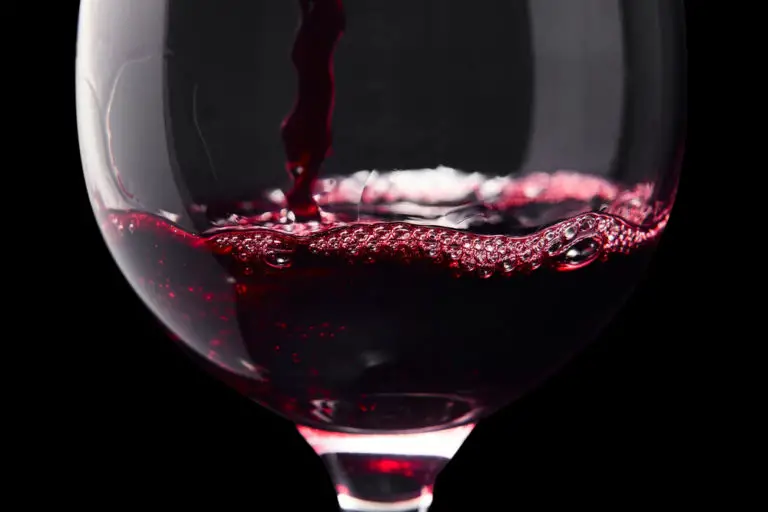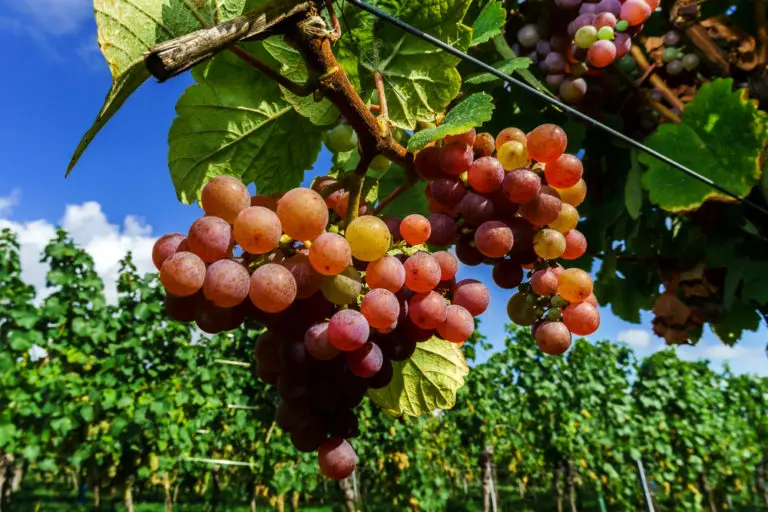Fortified Wine for Beginners (Everything You Need to Know)
Though Fortified wine is not a mainstream beverage, it has a symbolic place in the wine chart. Like any other category, there are many misconceptions around them, and it has many varieties.
Thus it is necessary to know about different categories, their preparation method, and the right way to serve them.
- What is Fortified Wine?
- Fortified Wine Characteristics
- Difference Between Sweet & Dry
- Fortified Wine Varieties
- Fortified Wine’s Ageability
- How Should Fortified Wine Be Served?
- How is Fortified Wine Made?
- History of Fortified Wine
What is Fortified Wine?
Fortified is a vicious and delicious wine that is often enjoyed before or after dinner. Marsala, port, Madeira, Vermouth, Sherry are some of the wines in this category. These wines are generally diluted (fortified) with spirits like brandy. The fortified wine alcohol content is around 17 to 20 percent alcohol by volume.
Initially, the use of fortification was to preserve the wine. It was prone to turning to vinegar on the long sea routes. Now, the winemakers add these spirits to enhance their natural flavor.
Unlike other alcohols, fortified wines have several benefits like it is rich in antioxidants, may protect against chronic diseases, and support heart health. Of course, it is beneficial only if consumed in moderation and may cause harm if consumed in access. The downside of this wine is that it contains more alcohol, is high in calories and sugar.
Fortified Wine vs. Dessert Wine
People often assume that dessert wine and fortified wines are the same. But that is not always right. Dessert wines are always sweet, while fortified wine can be sweet or dry.
Dessert wine does not have any added alcohol and goes through various processes to achieve the desired sweetness. They are generally made of late-harvest grapes as it becomes full of natural sugar. Some are subjected to the mold, botrytis cinerea, which contracts the grape to create a honey and dried fruit flavor.
In the US, many fortified wines are referred to as dessert wines to avoid them being categorized as ‘hard alcohol’.
Fortified Wine Characteristics
Fortified wine can be a red wine or white wine with an extra spirit added to it during the fermentation process. This process of fortification does not alter the color as the added alcohol is crystalline and colorless.
You can find a fortified wine in any color that is typical in any wine, from dark and purplish-red young vintage Ports to pale straw yellow of Jerez Fino.
Its aroma depends on the type of the base wine and the production method. Some common aromas are almonds, peach, figs, jams, dried fruits, blackberries, black currant, and strawberry.
The taste of fortified wines is not perceivable as the aroma perceived is dominant. Most of the fortified wines have a high quantity of sugar, and the sweetness is perceivable. In some alcohol, the caustic effects on the taste buds lower the perception of sweetness, making the wine taste less sickly.
Difference Between Sweet & Dry
Both dry and sweet wines are made using the same principles. Wine is first fermented, and then the distilled spirits are added to it.
The difference between the two is the time at which this spirit is added to them. If the spirits are added before fermentation takes place, then they produce a sweet fortified wine. Whereas when the spirit is added after the fermentation process is completed, it results in a dry fortified wine.
When the winemaker adds the spirit in the end, the yeast breaks down most sugar resulting in a dry vintage.
Fortified Wine Varieties
Playing with the different factors of production leads to many types of fortified wine. The most common are Sherry and Port, while other famous wines are Madeira, Marsala, and Vermouth. Each of them has a different taste, some of them being sweet while the others are dry.
Sherry
Sherry fortified wine is a Spanish wine from Jerez de la Frontera and is made from white grapes. It is sometimes sweet (in the new world) and more often enjoyed as a dry wine. Due to the chalky soils from the production areas, it has a salty taste.
The production of this wine is complex and different from other fortifying wines. The fermented white wine is stored in a “Solera” system which consists of barrels stacked in a pyramid-like shape. It is mixed with older juice from time to time, resulting in a complex aging process. Sherry alcohol content ranges from 15% ABV to an incredibly boozy 22%
Some common types of sherry are fino, manzanilla, manzanilla pasada, oloroso, palo cortado and amontillado.
Port
Port fortified wine is a Portuguese wine originally from the Douro part of Portugal. It is a sweet red wine that is now made across the world. Sometimes, you can also find it in dry, semi-dry, and white varieties.
It is produced by adding aguardiente, a flavorless brandy with 77% alcohol. It is mixed with the juice when grapes reach about 7% alcohol by volume value during fermentation.
Port can be made from over 8- grape varieties. Tinta Barroca, Touriga Franca, Tinta Roriz, and Touriga Nacional are the most common high-quality grapes that produce tasty fruity flavors.
Some popular subcategories of the port are ruby, tawny, reserve and rose, late bottled vintage, and white port.
Madeira
Madeira is an exclusive Portuguese fortified wine that originates from Madeira Islands. These wines are available in various styles, from dry to sweet. It goes through heat treatment so it can not be destroyed and can be aged for a century. Winemakers discovered this process in the 15th and 16th centuries when the wine was shipped across the oceans, and the sun’s heat improved the flavors.
Approx 85% of these wines are made from the Tinta Negra Mole grape, a cross between Grenache and Pinot Noir. Popular sub-types of blended Madeira are rainwater, finest, reserve, and 20 years old, while single Madiera can be found as Sercial, Verdelho, Boal, and malmsey.
Marsala
Originally from Sicily, Marsala is a cooking wine that is fortified after fermentation. It has a distinct dry flavor and is sometimes sweetened, making it great for dessert recipes.
It is created through the “In Perpetuum” process, like the solera process mentioned earlier. It is made from white Italian grapes and has 15-20% alcohol. It is divided into different categories based on color, age, and sweetness. Older wines are excellent for drinking, while younger ones are great for cooking.
Based on the color, Marsala can be classified as Amber (Ambra), Ruby (Rubino), and Gold (Oro). Secco is the driest form of Marsala, while Dolce is the sweet wine.
Muscat
Muscat is a fortified wine type known for having a sweet flavor with a fruity and floral fragrance. Muscat is the grapes that are used to create this delicious wine in Australia, particularly from Rutherglen. The fortification takes place at the early stages of fermentation, keeping the aromatic qualities of the grapes intact. Since the fermentation is stopped in the initial phase, it is a sweet wine.
There are 200 grape varieties in the Muscat family. The most commonly used variety for winemaking is Muscat Ottonel, Muscat of Alexandria, and Muscat Blancs.
Some common styles are French Vin Doux Naturels (VDNs), Rutherglen, and Moscatel de Setubal.
Mistelle
Mistelle wine (Italian) or Mistela (Spanish) is a luxury wine produced from non-fermented grape juice with added alcohol. It is different from other fortified wine types because fortification in those wines happens during or after the fermentation.
It is of a light amber color having the aroma of white peach and orange blossom with a slight hint of vanilla. It acts as a perfect thirst quencher, is best served neat over ice or in a summer cocktail.
In France, it is also referred to as Vin de Liqueur. Some of the most famous examples are Ratafia from Champagne or Bourgogne (Burgundy), Floc de Gascogne from the Armagnac zone and Pineau des Charentes from the Cognac area.
Vermouth
Vermouth is Spanish fortified wine with more aromatics added to it (mostly wormwood). It can have the flavors of spices, florals, fruits, and herbs. This traditional spirit originates in Italy, but it is also famous in Germany, France, and Spain.
Vermouth can be dry to sweet and is seldom drunk straight. If you want to enjoy it neat, you can try it by adding a little soda and an orange or lemon zest. It can also be added to make cocktails like Negronis, Manhattans, and martinis.
Belsazar White, Belsazar Red, Ferdinand’s Saar Dry Riesling, La Quintinye Blanc, and Noilly Prat are some of the famous vermouths that you must try.
Commandaria
Commandaria is a rich amber-colored wine from the Mediterranean island of Cyprus. It can strictly be made in the Troodos foothills region that comprises 14 wine-producing villages.
It can be both sweet and high in alcohol (15-20%). It is made from high sugar levels of wine grapes that are later concentrated by the drying process making this wine sweet naturally.
Both white (Xynisteri) and red (Mavro) wine grapes are used to make it. Keo St.John, Etko Winery St. Nicholas, Tsiakkas Winery, St. Barnabas, Alasia, and Antoniades Winery Commandaria are a few known wines of this region.
Pineau Des Charentes
Pineau des Charentes is a wine made from the combination of freshly pressed grape juice with the bold kick of Cognac. It comes in red, white, and rose colors, and the style depends on the age. Young wines are light and fruity, while old wines have a complex note of honey, nuts, and dried fruit.
It is perfect for every occasion and taste bud. You can enjoy it in a cocktail, as a food pairing, or as a digestive.
Ageing categories of white pineu are Blanc, Vieux Blanc and Tres Vieux Blanc. With red pineu they are classified as Rouge, Vieux Rouge and Tres Vieux Rouge.
Moscatel de Setúbal
Moscatel de Setúbal is a rich and honeyed wine made in the Setúbal peninsula of Southern Portugal. It has strong notes of honey, grape, mandarin orange, caramel, and dried apricot. Muscat of Alexandria grapes is used for the production of this sweet fortified wine.
It is fortified with grape brandy and is aged for at least eighteen months. You can enjoy it alone, but you can also pair them with soft-centered cheese and caramel-based or dry desserts. It has a fruity and soft palate and leaves a fresh aftertaste.
Gwaha-Ju
Gwaha-Ju is a fortified rice wine made in Korea. Although it is not made from grapes, it has a similar alcohol content to grape wine. The addition of the soju, distilled spirit, and ingredients like jujubes, ginger, ginseng, etc to the rice wine bears similarity to the above-mentioned fortified alcohol.
It is traditionally consumed in East Asia, Southeast Asia, and Northeast India. Some of the common styles are Boseong Gangha-Ju (from Boseong County, South Jeolla), Namwon Sinseon-Ju (Namwon, South Jeolla), Suwon yak-soju (Suwon, Gyeonggi), and Yeonggwang Gangha-Ju (Yeonggwang County, South Jeolla).
Vins Doux Naturels
The Vins Doux Naturels is primarily a specialty from wine-growing areas near the Pyrenees and the Mediterranean in the French area of Languedoc-Roussillon with the general appellation “Grand Roussillon”. There are red, white, and amber-colored versions made from Grenache or Muscat varieties. It is not a very sweet wine but a soft and spicy wine.
You can enjoy this as an aperitif, as a small refreshment in between, or as a summer dessert. In winter, as a reminder of the warm days of the year, you can serve it with warm cake, homemade ice cream, and cookies.
Fortified Wine’s Ageability
Aging is an essential process that includes storage, aging in wooden casks, and/or bottle aging. The size of the wood barrel depends on the wine style.
For example, wine intended for vintage or ruby port wine production is aged in a large wooden barrel while tawnies are aged in the small one.
Similarly, tawny undergoes an oxidative aging process, while Ruby and Vintage Port have much less oxidative aging.
As a general rule, when sugar content is higher in alcohol, it will last longer when open, and there is no need to refrigerate it until you like it chilled. You can keep it in a dark cupboard away from heat, and it can be enjoyed whenever you want.
Not every wine improves with the case, and the same is true for fortified wines. Usually, the cheaper fortified wines available in the market are the ones that are aged for a shorter duration.
How Should Fortified Wine Be Served?
Fortified wines are generally designed to be enjoyed straight from the bottle, but you can also use them in mixing cocktails. They are best in simple drinks like white port and tonic and sherry cobbler. Its serving size differs depending on the type and the amount of alcohol in it. Typically a serving is about 3 ounces or 88 ml.
Stemware
Fortified wines must be served in a large glass that allows anyone to swirl and smell them. You should serve fortified in a good-sized wine glass with a rounded body and slightly tapered sides towards the top. It allows you to pour the wine generously so that you can sit down, relax and enjoy your time.
Temperature
Like non-fortified reds, the best temperature to serve a fortified wine is between 50 and 65 degrees. But, dry fortified tastes best at cooler temperatures (50 degrees), unlike non-fortified, while sweet dessert wines are best at higher temperatures (as much as 65 degrees).
Food Pairings
It depends on the type of fortified wine you are drinking. Generally, it is known as both a dessert wine option and an aperitif. A few items that pair well with most of these wines are cream-based or chocolate desserts, nuts, many kinds of cheese, and fruit tarts.
How is Fortified Wine Made?
A wine with higher alcohol by volume content (ABV) or higher alcohol content is a fortified wine. It is achieved by adding a distilled spirit during the vinification process.
Like any other wine, the wine fortification process consists of 6 steps: Harvesting, Crushing the grapes, Fermentation, Pressing, aging, and bottling.
Harvesting
The first step of fortifying is harvesting the grape. Winemakers determine the wine’s sweetness, acidity, and flavor and pick up the grapes accordingly. The grapes are generally red or white wine grapes. Once the grapes are picked, they are then transported for crushing.
Crushing the Grapes
After the grapes are gathered, they are put through destemmer, where the grapes are destemmed. Then, the grapes are pressed. In white wine, the process of racking is done to remove skin and other sediments. Red or rose are not filtered and are directly forwarded for fermentation.
Fermentation
It is an essential step for fortification. In this step, the juice is allowed to ferment, and an added spirit like brandy is added to fortify wine. Depending on the sweetness of desired liquor, the spirit is added before, during, or after fermentation is completed. This entire fermentation process takes several weeks to be completed.
Aging
This process is to add a complex texture and flavor to the juice. Some lower-quality wines are allowed to age in cheap stainless steel tanks, while oak barrels are used for reds. The duration of aging depends on the winemaker. They may allow the wine to mature for years or just for a short duration.
Bottling
After the completion of the maturing phase, the fining process is started. In this process, the unwanted particles are removed, which makes them look cloudy. This process includes adding stuff like bentonite (clay), milk, egg whites, gelatine, and fish guts to bind the unwanted particles and make them large enough to filter out. After this process, the wine is bottled and is ready for sale.
History of Fortified Wine
Fortified wines were created as a requirement to protect the wines on long sea voyages. In the 16th and 17th centuries, trade started to expand across the globe.
Many European wines used to get spoiled on the long journey across oceans. To overcome this problem, winemakers used to add spirits like brandy to stabilize it.
These new fortified wines were better in withstanding the long journey as the ship encountered fluctuating temperatures on the route. After reaching the destination, people used to often order this wine over regular one because of the higher alcohol content, firm texture, and robust flavors.
It resulted in this new category, and it continues to be served after years, even when the fortification was not vital. Thus, fortified wines are more stable than ordinary table wines and less likely to spoil after opening.
FAQ
What is the difference between wine and fortified wine?
Fortified meaning the wines that have added spirits like flavorless grape brandy added to them. Standard wine only contains the alcohol that is formed by fermentation.
What is fortified wine used for?
Fortified wines are served as digestifs or aperitifs before or after meals to help stimulate digestion and appetite. Some are also used for cooking purposes.
What are examples of fortified wine?
Port, Sherry, Madeira, Marsala, Vermouth, Commandaria wine, Pineau Des Charentes, Vins Doux Naturels, Gwaha-Ju, and Moscatel De Setúbal are some known examples of fortified wines.
What is the difference between fortified wine and sherry?
Sherry is a dry fortified white wine in which the winemakers add flavorless spirit or brandy after the fermentation process is complete.
Do you refrigerate fortified wine?
Yes, storing the fortified dessert wine in the fridge will keep the flavor intact for a longer time to up to a couple of months.
How long does fortified wine last?
If the fortified wine is kept in a cool, dark place with a sealed cork, then it can last up to 28 days.
How do you know if a wine is fortified?
According to the fortified definition, any wine with an alcohol concentration between 16% up to 24% and has added alcohol falls in this category.
Is Moscato a fortified wine?
Yes, and No. Moscato wine is made from the Muscat family of grapes. That can make either of three- still, sparkling or fortified.
What are the different types of fortified wine?
Port, Sherry, Madeira, Marsala, Vermouth, Commandaria wine, Pineau Des Charentes, Vins Doux Naturels, Gwaha-Ju, and Moscatel De Setúbal are a few known types of fortified wines.
How to make fortified wine?
When extra flavorless spirits like brandy are added to the wine juice before, during, or after fermentation, it results in fortified wine.
Is Madeira sherry?
They both are made in Spain using the solera method. But, Madeira is not as refined as Sherry. Thus, Madeira Sherry are two different categories of fortified.

